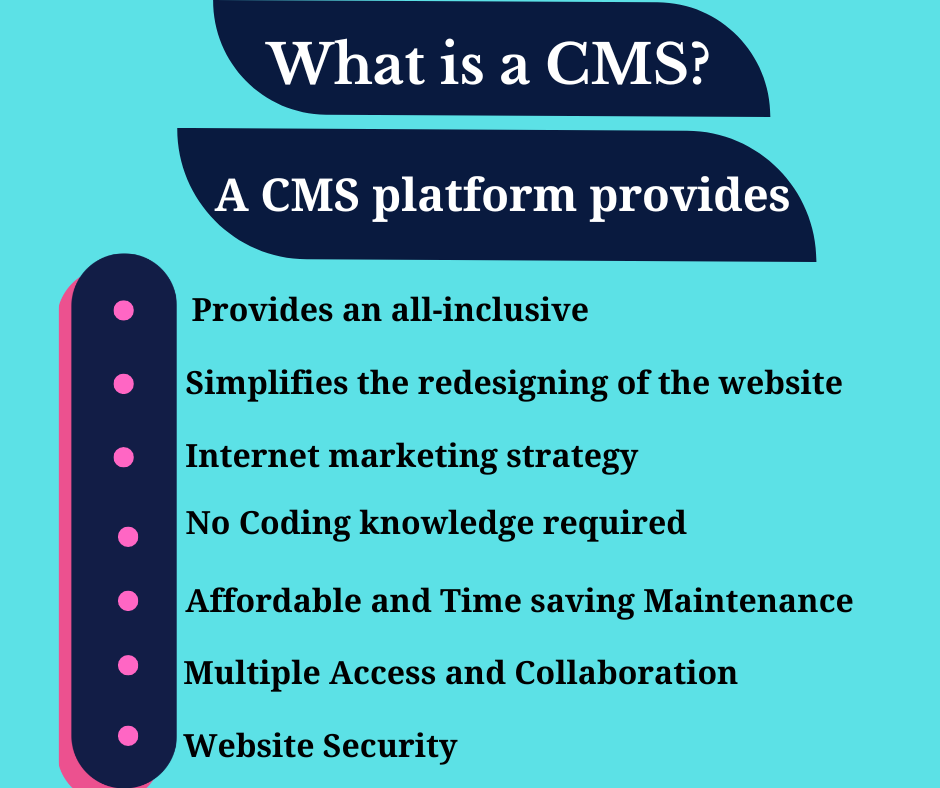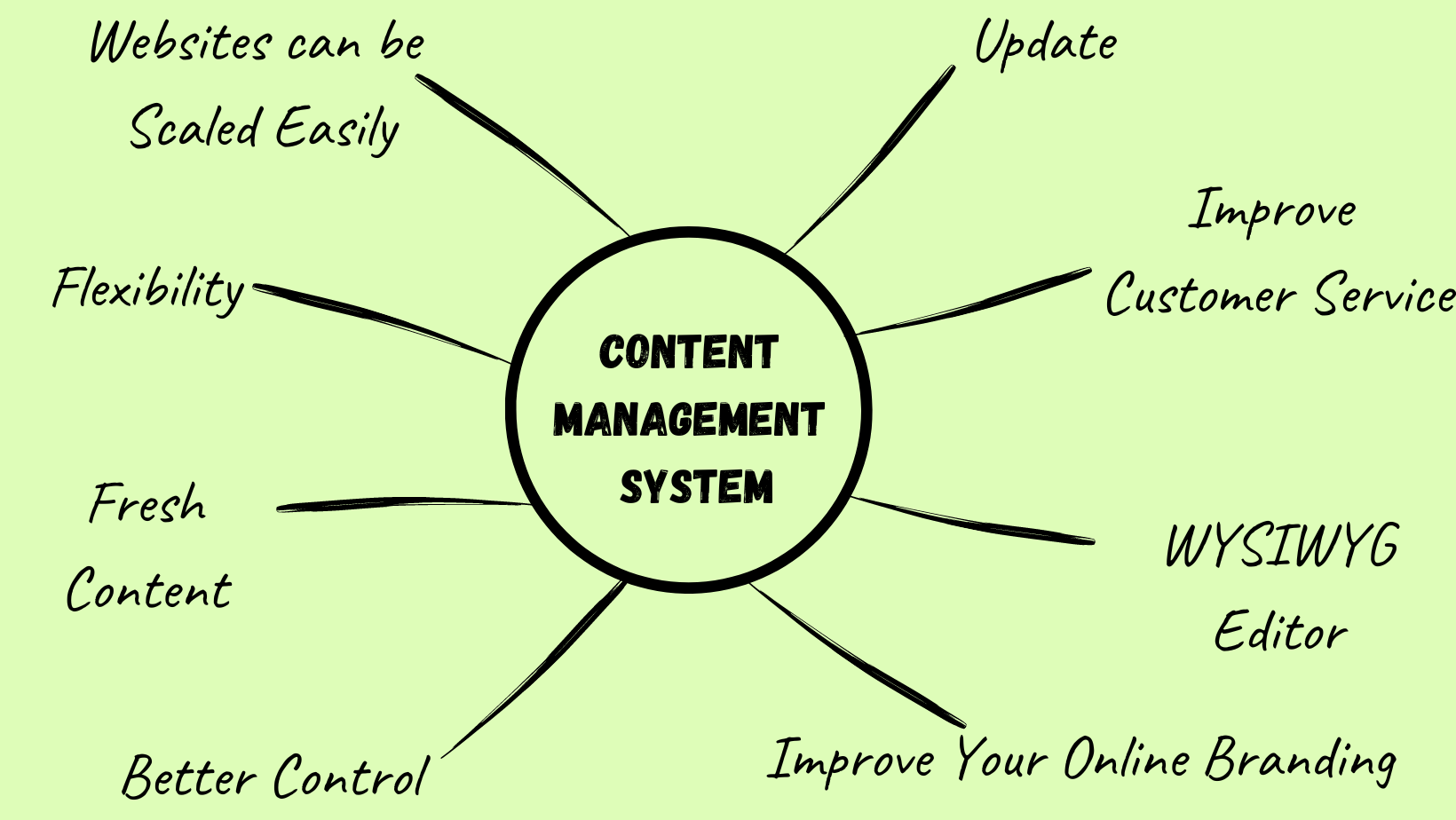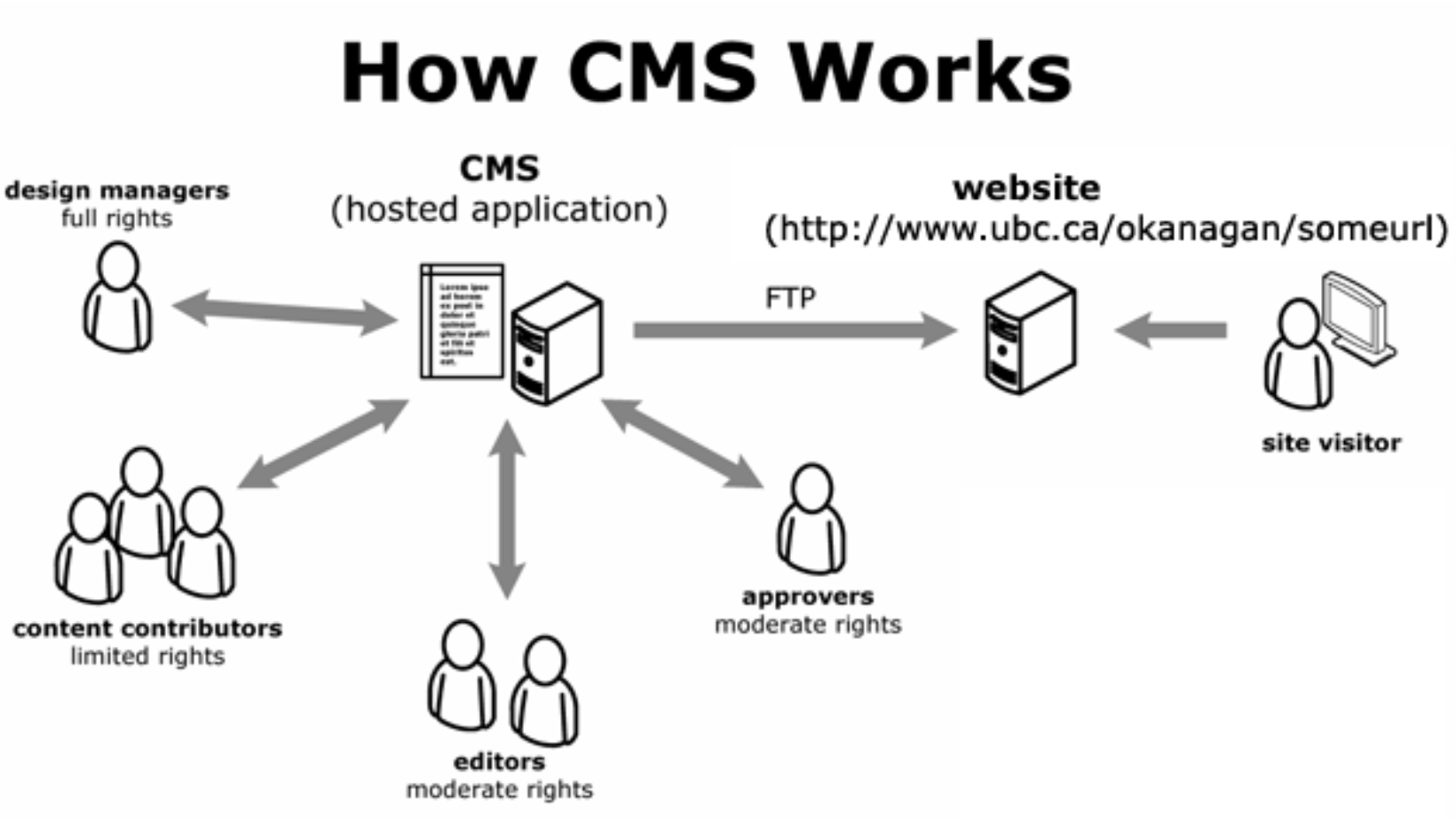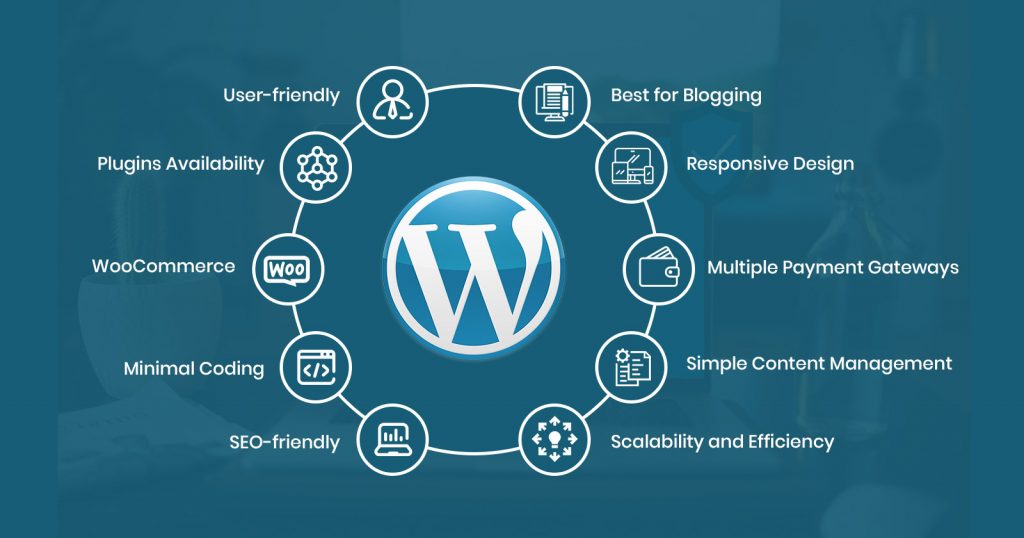Content management systems CMS emerged in the early 2000s. These were gradually spreading over the globe. In 2011, 24% of all websites were using. Till 2022, this percentage increased to 67% of websites. Now, over 80 million websites are built with CMS.
Content management systems have made websites easy to handle. Content management systems are the must-have application for every website. Let us discuss, what is a content management system and which one is the best.
Page Contents:
What Is A Content Management System?
A content management system (CMS) is a software application used to manage and create content for a website without manual coding. The software helps to create, manage, and modify your website content and functions. The CMS stores the content of a website in the form of a database.

Every content management system has two elements content management application and the content delivery application. The CMA is the graphical interface that allows the users to design and modify their website. The content delivery application gives the backend support for the management and delivery of the content.
Why Do We Need CMS?
The CMS are very easy-to-use tool. a person with very little or no programming knowledge can also manage a site. It performs and manages SEO practices by optimizing web content like images, text, or videos. Multiple people can have access to manage a website and add content to it.

It helps to keep your site maintained with real-time modifications and updates. You don’t need any web developer to update your site’s content. You can easily collaborate with multiple people who can add and modify content. Each person can have an individual account and can log in to multiple devices.
It also provides easy and quick integration with many other tools. The extendable features with the best and extraordinary solutions make the CMS a cost-effective way of website management. With a content management system as the back support, you don’t have to worry much about the security of your site.
How Does CMS Work?
As mentioned above the CMS is the system that helps you control your website. It has two components the content management application and the content delivery application. The content management system works around the creation and delivery of the content.

When a user creates any type of content using the content management application. The images, blogs, or videos are organized and stored in the database. These files are stored with metatags which makes it easier to find the data.
The content after being stored in the database can be published using different content templates. By adding plugins and tools to CMS systems you can optimize the content for SEO. You can edit and modify the content anytime you want with minimal effort.
How To Choose A Content Management System?
There are many CMSs present out there. You need to choose the best fit for your website. Let us see what steps should be kept in mind while choosing a content management system.
1. Know your goals
Figure out what you are trying to achieve by the CMS. Analyze the current position of your website and make a plan to improve or grow with the help of CMS. Try to analyze the current trends for a niche. Find what your website needs.
2. Easy to use
All the members of a content or website creation team will be using the CMS. Keep this in mind you should choose a content management system that is easy to use for a nontechnical person and also for a technical person.
3. Customization features
Look for a CMS which have plenty of customization option. don’t compromise with the flexibility of the CMS. Often easy-to-use CMS does not have a good customization section. Most of the CMS platforms provide pre-designed themes. This reduces the need for development resources. you can simply choose the theme for your website.
4. Security features
A secure CMS is very important. The CMS system should keep the content safe and secure for the users, visitors, and also for the website itself. If you don’t have best practices to secure your websites from unwanted invasions. Then a CMS platform providing security to your site is very important.
5. Budget
Budget plays a crucial role in decision-making for a business. The last and most important factor is the pricing of the CMS platforms. Keep note of all the necessary features are fit your budget.
Which Content Management System Is The Best?
The best content management system according to many websites is WordPress. WordPress was launched in 2003 to facilitate blogging has now evolved with numerous features and has become 20 years old. Many platforms are growing at a phenomenal speed but it is believed that WordPress will be still leading the CMS world.
43% of the websites are built with WordPress. Roughly over 30.46 million live websites are using WordPress. Since 2010 the percentage of CMS websites using WordPress has increased to 27.25% in 2022.

In 2010 0nly 51% of websites were using WordPress and the system has maintained its popularity with the increase in market share to 65%. The 10 WordPress features that make the best include:
1. Simple functions:
The simple style and easy-to-understand features make it the most demanded CMS. It is very easy to use even a nontechnical person can handle all the WordPress operations.
2. Flexibility:
WordPress is very flexible. you can create anything a blog, website, photo blog, portfolio, online magazine, and even an online community. You can customize this all with very simple operations.
3. Publishing tools:
The publishing tools help to manage your content. You can create, and save as a draft, schedule publishing, and also check on several times you revised the post. You can make your content public or private anytime you want.
4. User management:
WordPress has a feature based on roles. WordPress has six pre-defined roles namely- super admin, admin, editor, author, contributor, and subscriber. these roles have the following duties:
- Super admin: A super admin has access to all the features and the admin of the websites. they can control everything on the site.
- Admin: An admin has access to all the admin features of a particular website.
- Editor: An editor can edit, publish, and manage posts and blogs including those of other users.
- Author: The author can publish and manage their post only.
- Contributor: A contributor can write and manage their post but cannot publish them.
- Subscriber: They can only manage their profile.
This feature helps the site owner manage the users. The site owner manages the access of the users based on their tasks such as writing and creating content, creating pages, managing plugins, managing themes, etc.
5. Media management:
The media library section of WordPress allows you to upload and keep media files such as pictures, videos, documents, etc. You can delete unwanted media files whenever you want. In addition to this, you can add alt text, descriptions, and titles to the media files.
6. Search engine friendly:
WordPress is optimized for search engines. The system helps to monitor your site performance by offering SEO plugins. The codes generated by WordPress are in full compliance with the standards of W3C. This makes your website capable of working with the current and upcoming versions of the browser.
7. Themes directory:
WordPress themes have over 31000 themes. These themes help you make your website presentation customized and beautiful. With the themes team of WordPress, you can create your theme and work on the layout of the website
8. Plugin directory:
WordPress offers tons of features for every user. There are 59000+ WordPress plugins. There are plugin directories that can also be used to make your website more powerful and effective. The directory is full of free and open sources of many plugins. Some examples are Yoast SEO, Contact Form 7, Elementor website builder, Classic Editor, etc.
9. Multiple languages:
You can use WordPress in multiple languages also. it is available in 70+ languages. You can build your website and post content in the native languages too.
10. Comments:
WordPress provides amazing features where you can interact with your website visitors. When you add comments on your website’s page the visitors can chat and comment on your website.